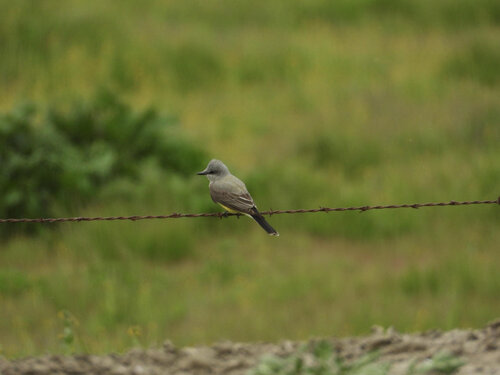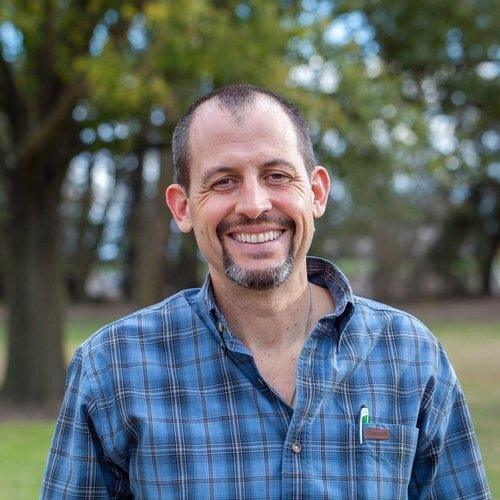How Bowles Farming Company Supports People and Birds – Even During a Pandemic

By: Meghan Hertel
Bowles Farming Company (BFCo) is located next to Grasslands Ecological Area and San Luis National Wildlife Refuge outside of Los Banos, California, in an area that has been designated as hemispherically important for migratory birds. It also happens to be one of our favorite places to go birding every fall and winter.
It shouldn’t come as a surprise that the farm itself has become part of the landscape that millions of birds rely on. Cannon Michael, president of BFCo, has partnered with Audubon over the last decade to support birds on his farm by restoring corridors and habitat, and finding new ways to manage crops to protect wildlife. You know a farmer is serious about birds when their Instagram includes highlights like the “Birds of Bowles Farming”.

As many of us have seen empty store shelves over the last few months, we have gained a new appreciation for the work of farmers which often happens far from our sight. We took some time recently to connect with Cannon, himself a sixth generation San Joaquin Valley farmer, to learn more about what this time is like for him and his farm, and to hear about his work to continue to support both human and bird populations – even in a pandemic. We hope you will join us in thanking Cannon, BFCo farmworkers and staff, and farmers everywhere for their work to keep growing the food we need during this time.
The following is an excerpt of our interview with Cannon:
Tell us a little bit about the birds you see on Bowles Farm?
We see birds using the farm all the time! We have such wonderful diversity here on the farm. Through our restoration efforts, we have been fortunate enough to have some thorough bird surveys done on our property and have learned about the 50+ species that inhabit our farm.
So then, what is your favorite from those 50+ species?
No way to pick just one. I love the year-round birds we have but also love the seasonal changes that bring our annual visitors back. We have amazing year-round diversity with raptors, herons, egrets, and so many other species. The return of the Sandhill Cranes is always special as we enter the Fall. We love hearing their distinct calls fill the air. Our many migratory waterfowl also make a spectacular return each fall. The many species of hummingbirds that pass through in the spring and summer are also a real treat. There is really no way to pick one.
This global crisis has called attention, in a new way, to just how essential farmers are – how has this crisis impacted your operation – the way you work and how you view your efforts?
Markets for some crops have been disrupted and become uncertain. For example, the shutdown of restaurants and commercial businesses creates issues. In the past, we expected every restaurant, hotel, and roadside place to have options at all times (you would never walk into a Subway and expect them to say they don’t have lettuce – no matter where it is located). So while these places forecast demand, they still likely over buy to a certain extent and waste a portion of what they buy if it isn’t consumed. So people are still eating but restaurants and commercial businesses are not buying so it impacts prices.
We made decisions in 2019 about what we would plant in 2020 – bought seed, rented greenhouse space, prepared the fields, planned for staff. So, we have a trajectory that is hard to change. COVID has created a number of challenges but as an essential industry we feel obligated to continue to grow food for the state and nation. It definitely highlights the risks we take and has increased the instability in pricing for us –which makes operating the business and ensuring jobs hard.
My hope is that people are getting closer to their food as they cook more for themselves – focusing on quality and where it was produced. It would be great if we all thought more about where things come from, who is producing what we eat, and what rules they follow to protect their workers and the environment. Consumers can affect change with their dollars and it would be great to see more people moving towards responsibly sourced products from good growers. I just don’t think many think about their food a lot – up until now. So maybe some changes from this event.
Can you describe how COVID-19 has impacted your workforce and if there are things you are doing to support/protect staff during this time?
Our first priority at BFCo was to address the health of our workers and provide as much support and education as possible to keep them healthy. We cannot operate without our people and they are so important to us.
We define health as not only coming out to work on the farm but their total health – mental, financial, emotional, etc. This has been a really stressful time for everyone. Many of our workers have spouses or partners who work – some of them were laid off. Childcare also became an issue for them. We did whatever we could to assist them through the challenges.
We have made a number of modifications and accommodations to observe social distancing and have provided educational material and PPE to keep people safe at home and at work.
How do you think about the environment in relation to your farm and what is an example of your farm’s commitment to conservation that you are particularly proud of?
Our farm is located next to an amazing ecological area and we have some great habitat corridors on the farm. Restoring our largest corridor has been really rewarding – working with a number of partners to create something really special and beneficial. Starting a native seed company has also been really rewarding (challenging as well).
Is there a questions that we didn’t ask that you wanted us to or other information you would like our Audubon network to know?
Along the food topic is the challenges we face with having a diverse ecosystem on the farm and producing food crops. We are working every year to try and improve the diverse ecosystem but food safety is a big issue. So, we do everything possible to make sure that food that leaves the farm is safe for our consumers – they are a top priority of course!
The problem is that the regulations and audits we face related to food safety make it very difficult to have the great number of wildlife species that we do. If you look at what we are required to do to meet some stringent food safety standards – it would results in a farm devoid of all species – which would be a tragedy. I don’t think the consumer understands this or wants some of the things that we are being required to do. A bird landing on a watermelon isn’t going to make it inedible or dangerous – but if this happens during an audit the melon could not be harvested.
There are food safety requirements that make sense – like all the water used on crops should be tested for E. coli and bacteria. But the idea that the birds of the farm are creating credible food safety risks doesn’t make sense – research shows it isn’t an issue either. We need to have better conversations about the food safety system we have and the ever-increasing regulations that are limiting conservation efforts while not making food safer.
Is there anything the public can do to support farmers during this time and importantly to support farmers like you that are leading examples of how to incorporate environmental conservation into the mission of their operations?
Yes! There are some really easy things everyone can do to help farmers who are working to support environmental conservation:
- Know who is producing your food
- Learn about seasonality and what might be produced locally
- Support farmers that protect their workers and the environment. These means buying food from regions with high regulatory standards and enforcement for those who don’t comply. For example, support your California farmer – you know that they are following the strongest environmental rules and workplace safety standards in the country which means healthy food, a healthy environment and healthy and safer farmworkers.